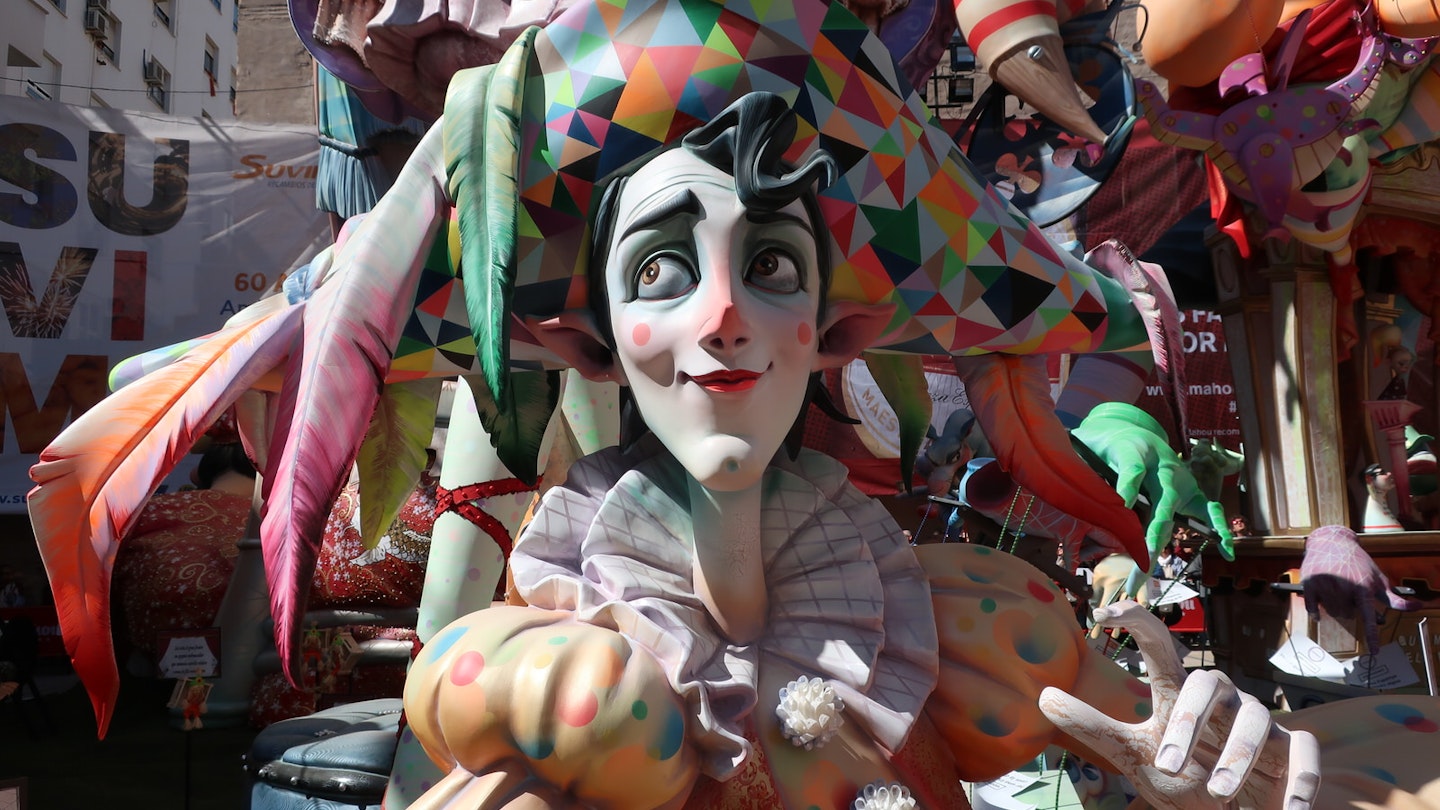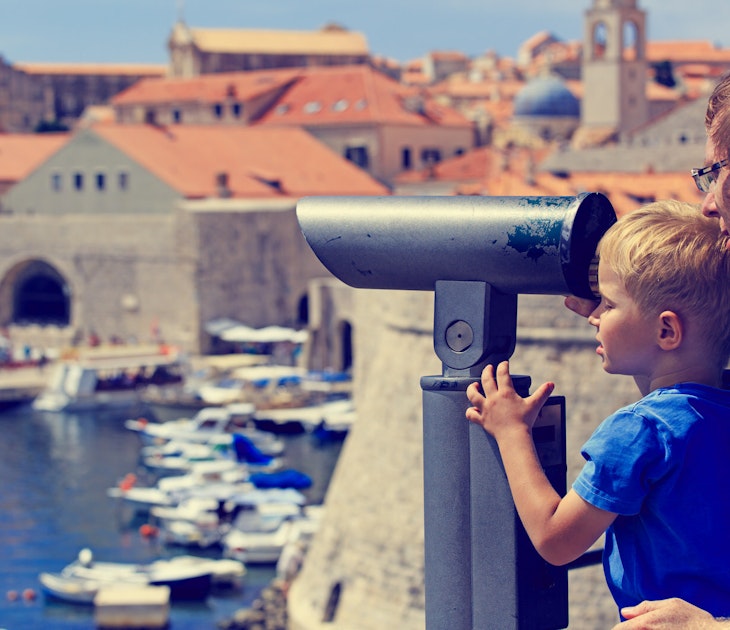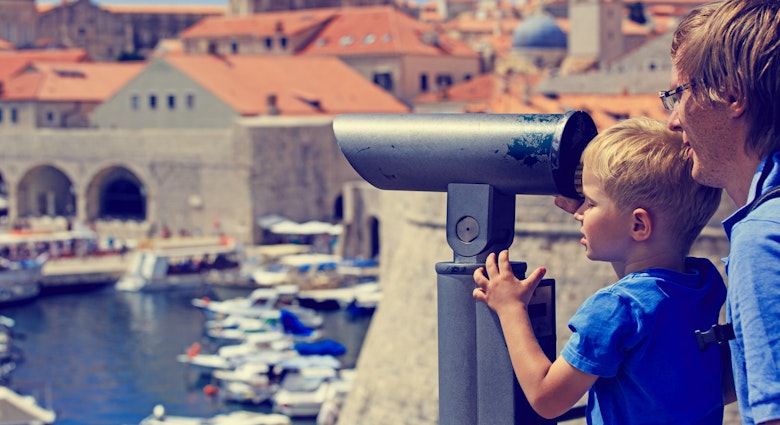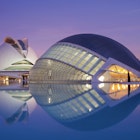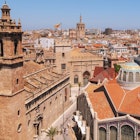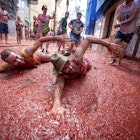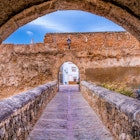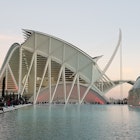Every March, Valencia is consumed by a burning fever as the Spanish city celebrates Las Fallas, a truly unique combination of art, humour and fire. The main events take place from 15-19 March, when there are fireworks displays, elaborate parades, and street parties all across Valencia. But what makes Las Fallas stand out is the tradition of creating beautiful sculptures with the sole intention of setting them on fire. Here’s the lowdown on one of the world’s hottest festivals.
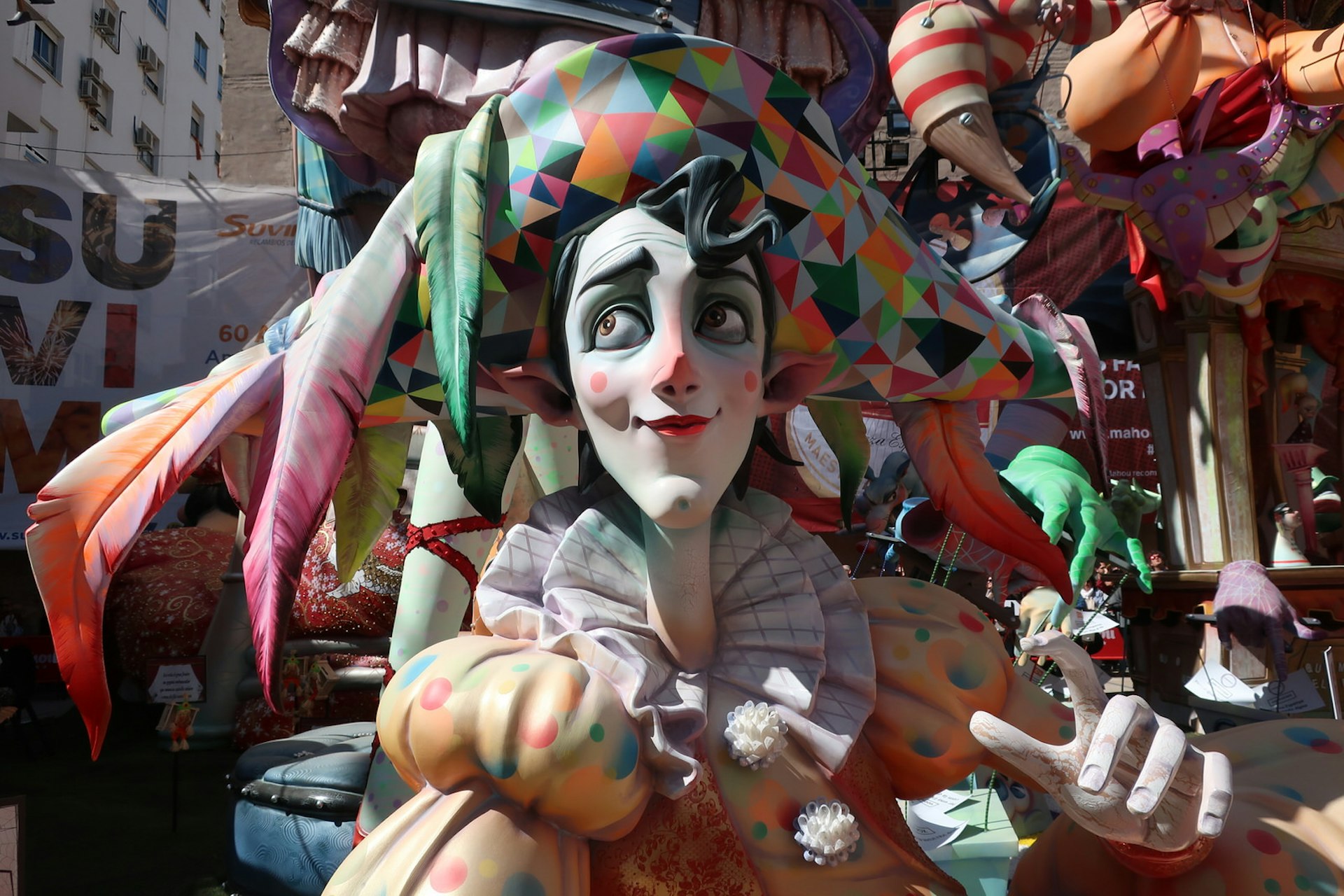
Las Fallas, past and present
Added to Unesco’s List of Intangible Cultural Heritage of Humanity in 2016, Las Fallas has its roots in the tradition of carpenters burning wooden candle holders (parots) to celebrate the end of winter. Over time, they began to make basic wooden figures and dress them up to poke fun at people they knew. The bonfires continued and the festival became linked to St Joseph’s Day, but nowadays the simple stick figures have evolved into works of art and preparation for Las Fallas takes almost a year.
Around 400 fallas (officially recognised groups) employ skilled artists to craft sculptures that are then judged in a city-wide competition. These astonishingly intricate creations (also called fallas) are comprised of huge individual papier-mâché figures (ninots) arranged into satirical scenes, often taking pot-shots at celebrities and politicians.
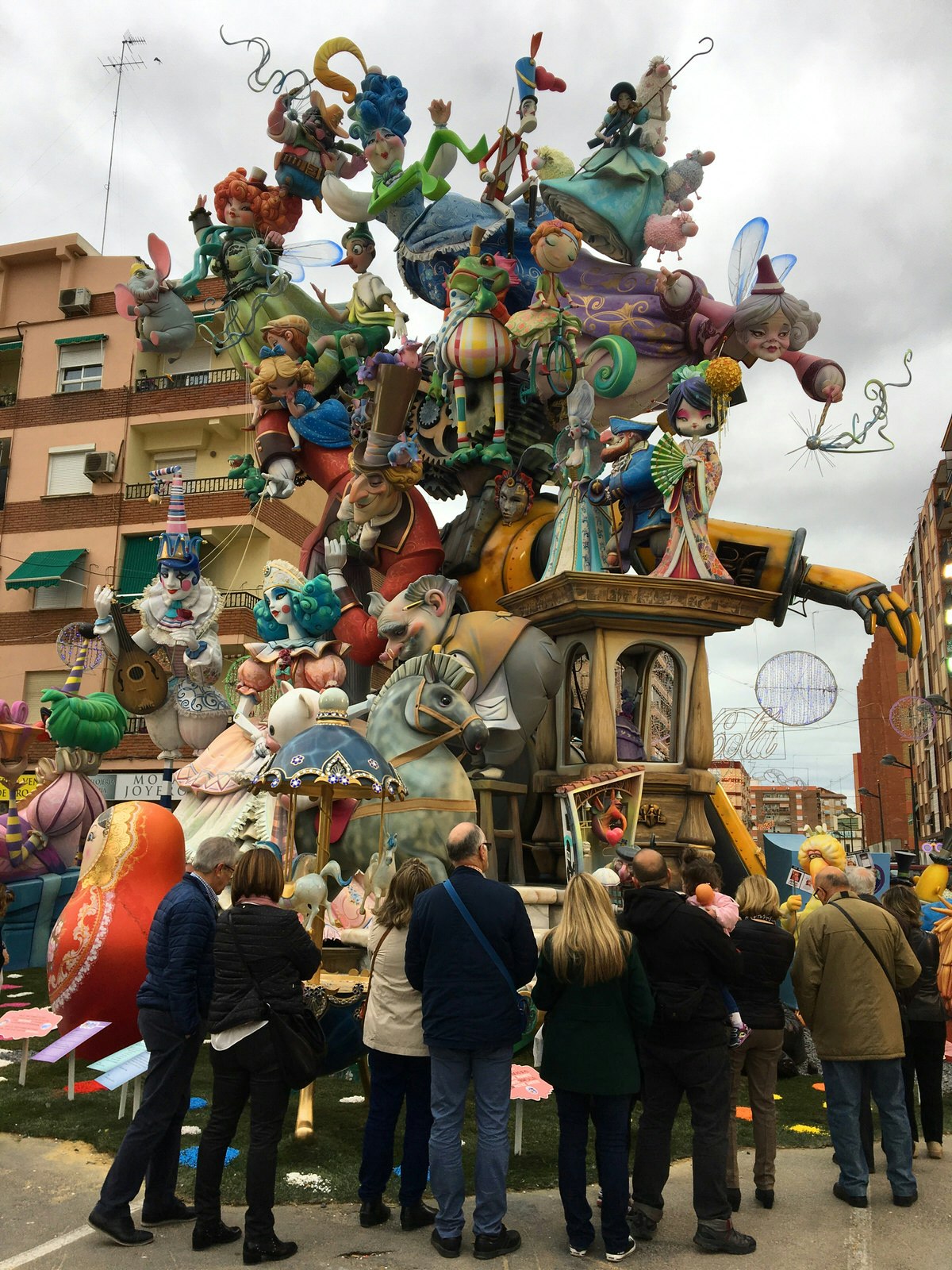
The completed fallas are all displayed on 15 March – La Plantà – so they can be admired by the public and judged for the competition before they’re burned on the final night of the festival. Though most fallas are free to see, there’s a charge of a few euros to get up close to the largest and most impressive ones.
Aside from seeing the fallas, there are several other unmissable elements of the festival.
Feel the noise of the daily Mascletá
Named after the masclet, a special kind of firecracker, this daily barrage of fireworks is one of the most prominent symbols of Las Fallas. Though many fallas hold mini-mascletás, the main event happens in Plaza del Ayuntamiento (Town Hall Square) at 2pm every day, and they build in intensity before reaching an unparalleled crescendo on the festival’s final day.
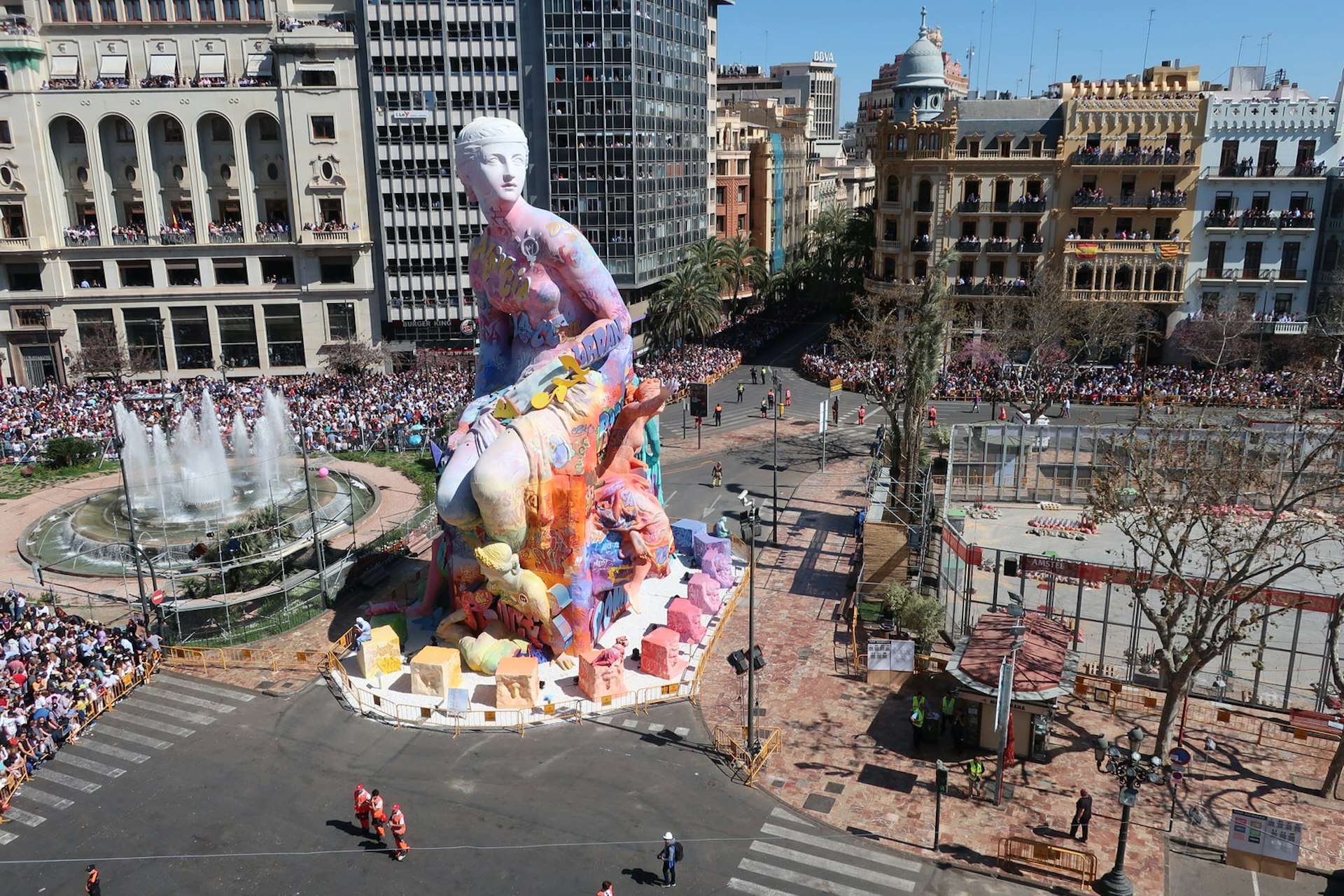
Rarely colourful, the displays focus on noise, rhythm and passion: the objective is not only to hear, but to feel the display, and anyone who is within 200m of the plaza is sure to do just that. It’s no exaggeration to say that the mascletá will likely be the loudest firework display you’ll ever experience. Local lore suggests opening your mouth to allow the noise to ‘pass through’, but it pays to pack ear plugs, especially if you’re close to the action.
Witness the emotional Ofrenda de Flores
One of the most important features of the festival holds a deep spiritual significance for Valencians. The Ofrenda de Flores (Flower Offering) takes place over two days (17 and 18 March) and sees as many as 100,000 people parading through the streets, bringing floral tributes to decorate a 30m-tall statue of the Virgin Mary.
It’s an emotional event and many participants are brought to tears as they reach the statue in Plaza de la Virgen. Even if you don’t share their faith, it’s hard not to be impressed by the scale and precision of the operation. Immaculately dressed falleras and falleros (women and men in traditional Valencian attire) from each falla are announced in processional order – each of them carrying the appropriate colour of flowers to fully realise the design of the Virgin Mary’s cloak – as brass bands playing traditional music march in time between them.

Gaze skywards in wonder on Nit del Foc
Traditional fireworks displays take place on several nights during Fallas week, but the most popular of all is Nit del Foc (Night of Fire) on 18 March. Lighting up the night sky to an enthusiastic chorus of oohs and aahs, this lengthy pyrotechnic extravaganza kicks off at about 1.30am and is always the biggest display of the year. Crowds gather on Paseo de la Almeda to see the saltpeter-stuffed projectiles shoot upwards from the beautiful Turia Gardens.
Embrace your dark side at the Correfoc
The Correfoc (Fire Parade) has been a feature of the festival for the past 20 years or so, and the almost-reckless use of handheld fireworks during the darkly entertaining procession adds a frisson of danger to Las Fallas.
On the evening of 19 March, goblins and demons (or, at least, Valencians who like to dress up) stalk their way down Colón towards Plaza de la Porta la Mar, some waving giant sparkler cannons in the direction of the crowds lining the streets, while others dance atop fire-breathing mechanical dragons, bringing a spirit of merry malevolence.
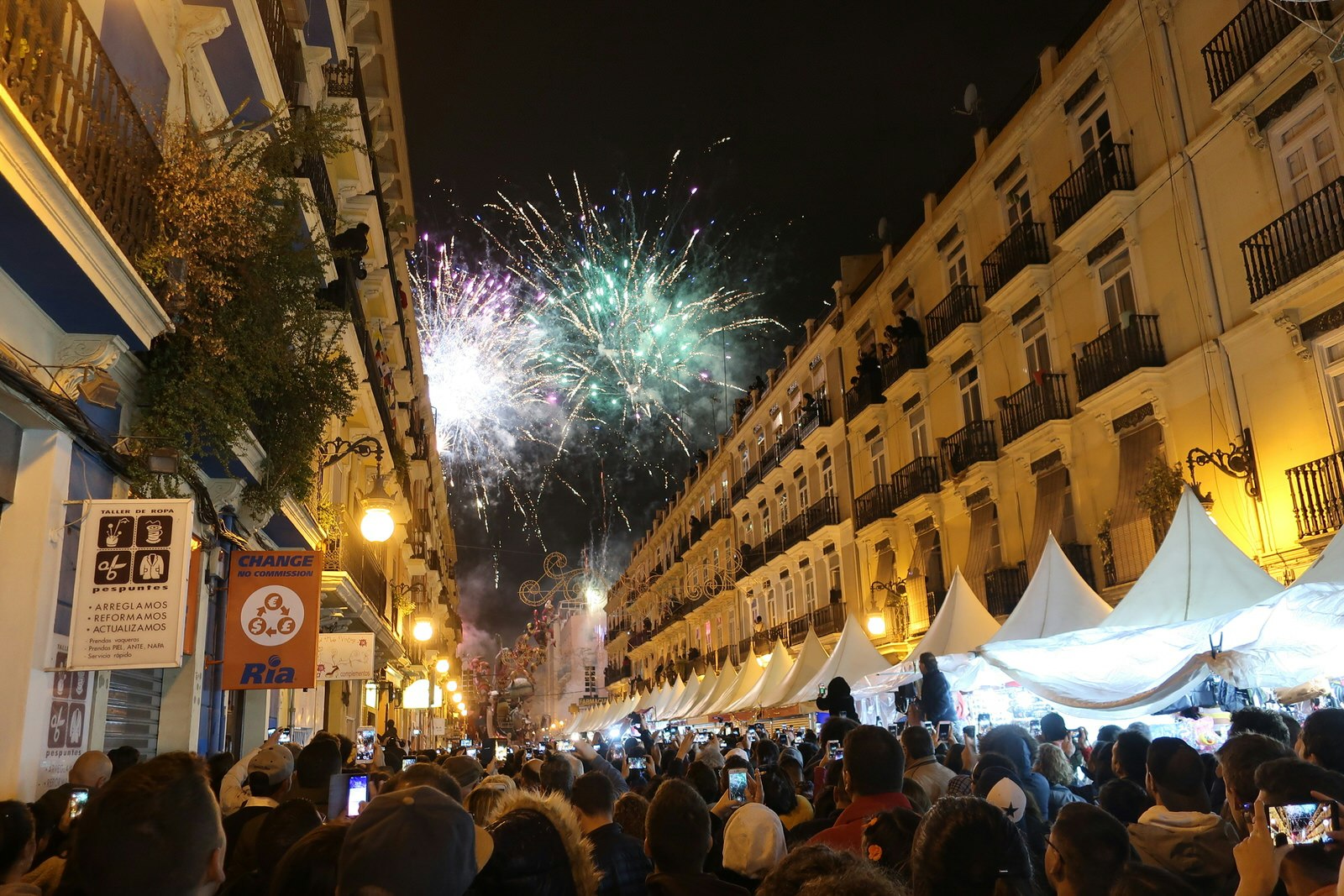
Feel the burn at La Cremà
The final ceremony of Las Fallas, La Cremà (The Burning), is what everyone has come to see. On the night of 19 March, every falla in the city is torched in a series of mesmerising bonfires. The burnings are staggered, starting at 10pm, allowing crowds to see more than one and, more importantly, allowing firefighters to be distributed effectively.
The piece de resistance is the burning of Valencia’s official falla in Plaza del Ayuntamiento at around 2am. It’s always the last to be set ablaze and enormous crowds cheer the flames and feel the searing heat as the huge monument is engulfed by the breathtaking inferno. Months of work is reduced to ashes in a matter of minutes. As the locals say, that’s Fallas!
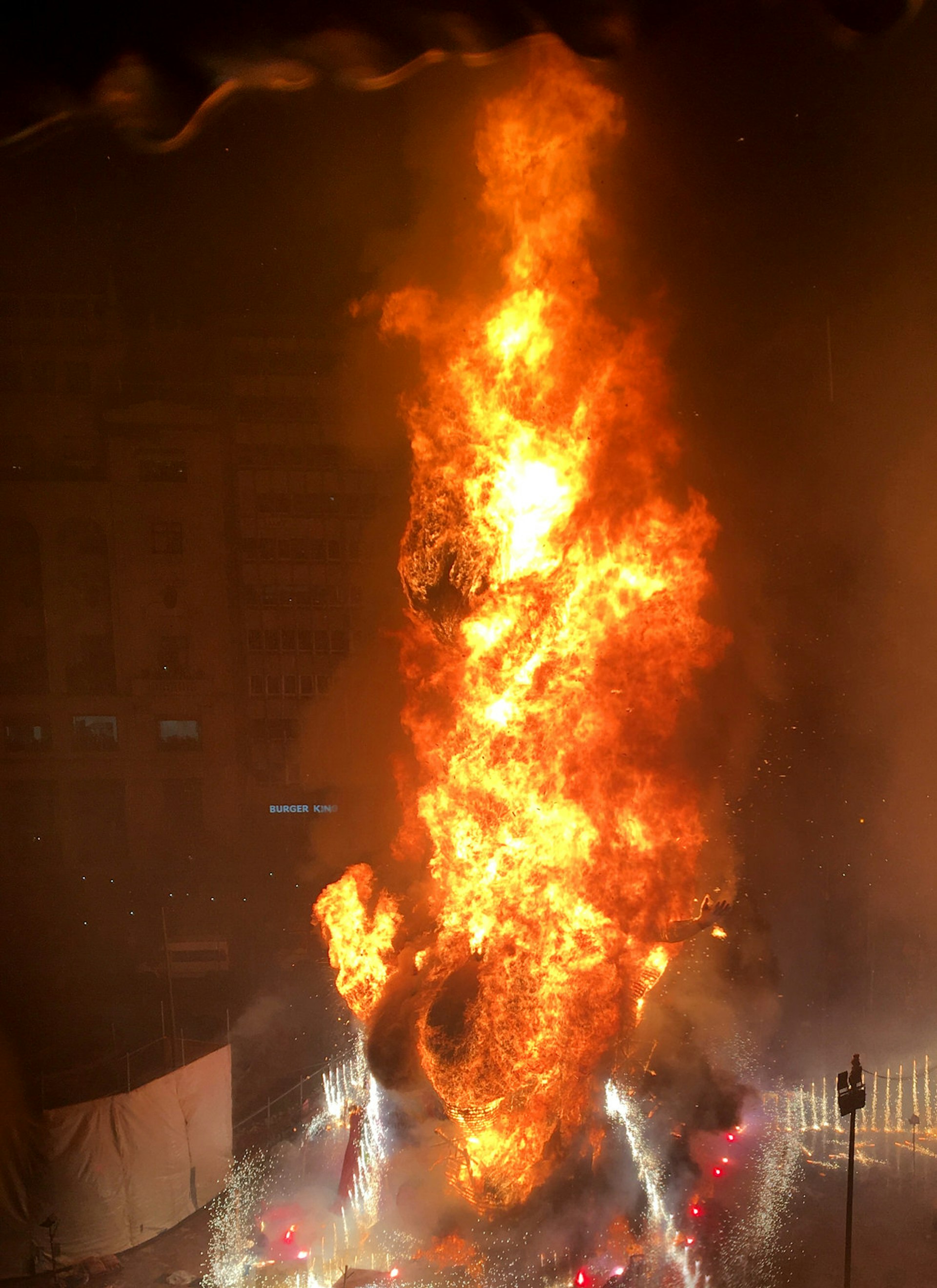
Making it happen
Valencia airport, 8km from the city, is well connected to destinations throughout Europe and is served by a variety of airlines, including easyJet, Ryanair and Iberia. Accommodation during the festival gets reserved early, so be sure to book well in advance. Some local bus routes may be affected by the festival, but Valencia has an efficient subway system that will ensure you get where you need to be.
Gemma Graham travelled to Valencia and experienced Las Fallas with support from Turismo Valencia. Lonely Planet contributors do not accept freebies in exchange for positive coverage.
